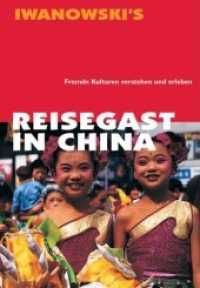- ホーム
- > 洋書
- > 英文書
- > Science / Mathematics
Full Description
Despite major advances in the observation and numerical simulation of the atmosphere, basic features of the Earth's climate remain poorly understood. Integrating the available data and computational resources to improve our understanding of the global circulation of the atmosphere remains a challenge. Theory must play a critical role in meeting this challenge. This book provides an authoritative summary of the state of the art on this front.
Bringing together sixteen of the field's leading experts to address those aspects of the global circulation of the atmosphere most relevant to climate, the book brings the reader up to date on the key frontiers in general circulation theory-including the nonlinear and turbulent global-scale dynamics that determine fundamental aspects of the Earth's climate. While emphasizing theory, as expressed through relatively simple mathematical models, it also draws connections to simulations with comprehensive general circulation models. Topics include the dynamics of storm tracks, interactions between wave dynamics and the hydrological cycle, monsoons, tropical and extratropical dynamics and interactions, and the processes controlling atmospheric humidity.
An essential resource for graduate students in atmospheric, ocean, and climate sciences and for researchers seeking an overview of the field, The Global Circulation of the Atmosphere sets the standard for future research in a science that stands at a critical juncture.
With a foreword by Edward Lorenz, the book includes chapters by Christopher Bretherton; Kerry Emanuel; Isaac Held; David Neelin; Raymond Pierrehumbert, Hélène Brogniez, and Rémy Roca; Alan Plumb; Walter Robinson; Tapio Schneider; Richard Seager and David Battisti; Adam Sobel; Kyle Swanson; and Pablo Zurita-Gotor and Richard Lindzen.







